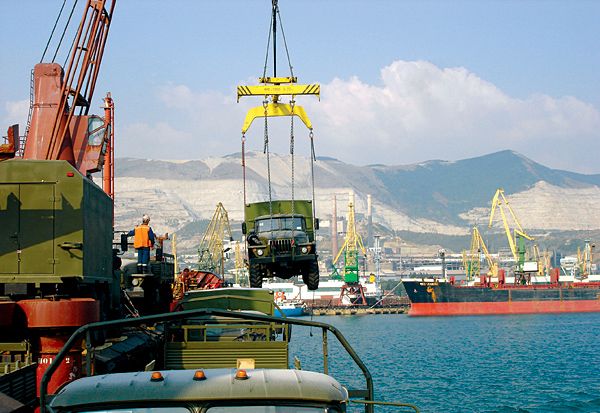This report is the result of an extensive market and company research covering the global military infrastructure and logistics industry. It provides detailed analysis of both historic and forecast global industry values, factors influencing demand, the challenges faced by industry participants, analysis of the leading companies in the industry, and key news.
Introduction and Landscape
Why was the report written?
“The Global Military Infrastructure and Logistics Market 2012-2022” offers the reader detailed analysis of the global military infrastructure and logistics market over the next ten years, alongside potential market opportunities to enter the industry, using detailed market size forecasts.
What is the current market landscape and what is changing?
The global defense industry is investing significantly in RandD in an effort to increase the logistical support capabilities of armies around the world. This has led to the development of new logistics information software which has enhanced the responsiveness of support providers, and has also enabled visibility of in-transit items in the military logistics supply chain. With the vast range of equipment that is being used in battlefields across the world, more and more civilian contractors are being brought in to deliver such support services. This has further led to the implementation of common platform based logistics enterprise systems in various countries, in order to enable vertical and horizontal integration at all levels of logistics. The implementation of such systems has ensured that all military and civil users view complete logistics management information and make timely, data-driven decisions. With the growing demand for installation support capabilities, many armies across the world are expected to rely on private contractors to provide expertise in repair, maintenance, transportation, and inventory accountability.
What are the key drivers behind recent market changes?
Many nations globally are currently focusing on modernizing their military infrastructure and related logistics. Countries are now moving away from the policy of ‘brute force logistics’ in which troops were responsible for sorting materials from huge inventories, towards a more efficient system that promotes precise accounting of consumption and replenishment in order to maximize efficiency. Moreover, the recently concluded wars in Iraq and Afghanistan have put considerable strain on the military infrastructure, and the US and allied nations are expected to modernize various elements of their respective military infrastructures.
What makes this report unique and essential to read?
“The Global Military Logistics and Infrastructure Market2012-2022” provides detailed analysis of the current industry size and growth expectations from 2012 to 2022, including highlights of key growth stimulators. It also benchmarks the industry against key global markets and provides detailed understanding of emerging opportunities in specific areas.
Key Features and Benefits
Detailed market analysis
The report provides detailed analysis of the market for military infrastructure and logistics during 2012-2022, including the factors that influence why countries are investing or cutting defense expenditure. It provides detailed expectations of growth rates and projected total expenditure.
The main providers in the industry
Lockheed Martin, Relyant, Genco ATC, AECOM, ANHAM, DynCorp International, Krauss-Maffei Wegmann, Honeywell International, Minrav Holdings, Grontmij,Reeves Construction Company, KBR, URS, American International Contractors, Klinge Corporation, Fluor Corporation
Market entry opportunities and entry strategies
The military logistics industry is currently going through a process of rapid transformation. The supply based system is gradually being replaced by distribution based logistics.This shift is expected to result in reduced inventory costs, shorter lead times, enhanced responsiveness of support, enhanced survivability of the support infrastructure, and a reduced logistics footprint. Recent years have witnessed a growth in the development of Commercial Off The Shelf (COTS) products and technologies, by various defense companies engaged in the field of military infrastructure and logistics.Major defense spenders such as the US and some countries in Europe are shifting from their respective legacy systems to more advanced platforms, in an effort to increase the efficiency of the armed forces.
Key Market Issues
Shift from a supply based system to a distribution based system
The supply based system is gradually being replaced by distribution based logistics. Under the supply based system multiple independent organizations are responsible for the distribution process, and there is thereforea lack of centralized command and management. Logistics units are either combined to form support groups or are separated to form functional or branch specific units. Conversely, a distribution based system results in reorganizing these units into seamless distribution commands and wouldhelp the armed forces to deploy rapidly in order to counter asymmetric threats.
Growth in commercial off-the-shelf (COTS) purchases
Recent years have witnessed a growth in the development of COTS products and technologies by various defense companies engaged in the field of military infrastructure and logistics. Governments are now buying bundled products as opposed to systems, which are then configured to be made into integrated systems. This process has many benefits including research and development cost savings and a reduction in production time. The asymmetric wars in Iraq and Afghanistan and rapid advancements in technology have resulted in changes in the way the military around the world is handling resupply and production.
Major defense spenders replacing outdated logistics systems
Many countries across the world are currently engaged in the process of overhauling their logistics capabilities. The primary element that drives an effective logistics system is the software used to view logistics transactional data. Major defense spenders such as the US and some countries in Europe are shifting from their respective legacy systems to more advanced platforms in an effort to increase the efficiency of the armed forces.
Companies are expected to consolidate in the face of global defense budget cuts
The military logistics sector is currently witnessing a phase of moderate MandA activity in keeping with the trend of sector consolidation when military demand falls. As defense spending has leveled off in recent years, companies operating in all areas of defense are looking to diversify their offerings in order to compete for the various contracts on offer and add more revenue streams to their existing lines of business
Key Highlights
North America to continue to dominate the market
Despite budget cuts, North America is expected to account for the largest share of the total global expenditure on military infrastructure and logistics, with an81% share duringthe forecast period. High demand in the region is primarily driven by the region’s logistics modernization programs andthe overseas war against global terrorism.
Joint RandD programs expected to increase over the forecast period
A significant number of countries are investing in the development of their domestic military logistics capabilities by establishing strategic alliances and technology transfer agreements with established global manufacturers. In addition to improving the indigenous capabilities of a domestic firm, this provides the foreign company with an opportunity to cater to a new market. Partnerships between countries that possess an advance defense industrial base, such as the US, the UK, and India, aid the mutual sharing of advanced technology.
Managing multiple supply chains poses a big logistical challenge
Military supply chains are very complex as they are comprised of many sub-chains that collectively create a logistics ecosystem. One organization cannot own all sub-chains, because of which their integration poses a challenge for the smooth working of logistics systems. Managing multiple supply chains in multiple domains is a big challenge for defense logistics organizations of all sizes, particularly for the largest expeditionary forces such as the US. If there is no proper management of supply chains, the result will be decreased operational effectiveness and reduced readiness of resources.











